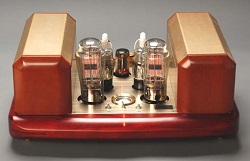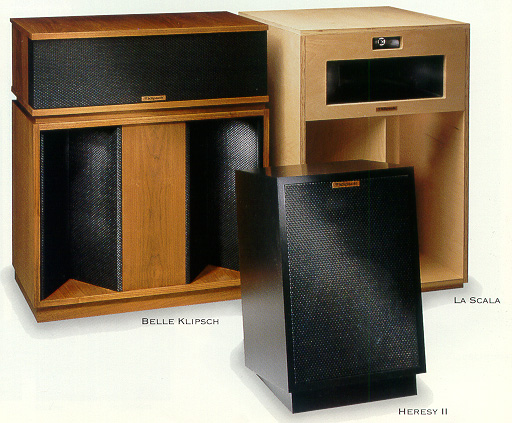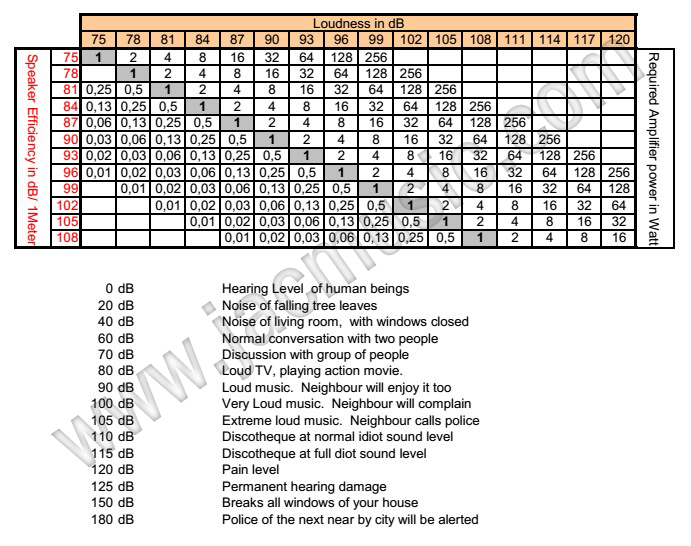© Jac van de Walle
Why do people build amplifiers with only 2.5 Watt per channel?
Have you ever made the experience that a larger amplifier sounded really nice at the higher loudness it was made for, only this loudness was too loud? It was great to hear it, but no longer than two minutes. Then, you prefer to turn it back to normal and say wow! that was nice!
Do you recognize the above situation? Let's look back on it. Was it really so nice? Then why did you turn it off after 2 minutes? Now, at low sound level, the sound becomes sterile, and this is sure not satisfactory. So what will most people do? They find a bad compromise. They Just increase the volume so that it begins to sound nice, but they have to shout if you want to say something. Needless to say, after 30 minutes you need a break. After that, you repeat it once or twice, and you turn the amplifier off for that evening.
Do you recognize yourself here? The question is, how long can you hear the music, without getting tired from it, but also is that what you wanted? I know people who love to hear extremely loud music for 2 or 4 hours, but myself I am not like that. I think good sound does not need extreme loudness at all. When listening to really very good horn systems, you need only conversation loudness, and sound can be so touching you can hear it for half a day, without a break. You can recognize "not so ideal" equipment simply by the fact that it sounds nice in the beginning, but you shut the stuff down, latest after 90 minutes of high loudness, and you are simply tired of it. And really, getting tired is not why we listen to music!
There is another class of equipment existing. Those amplifiers deal with this phenomena, and for technicians it can be put into numbers as well. There are two things you need to give attention to:
Rule #1
A tube amplifier sounds best when the tubes have something to do, like at least 25% of maximum.
Rule #2
Only high efficiency speakers will give a low power tube amplifier it's required dynamics.
We'll do a simple calculation in two cases, and things will become clear then.
 |
+ |
 |
= |
? |
Case 1. Amplifier 2x 50 Watt, Speakers 96 dB.
This is a very common case. Now let's see what that is going to mean for a normal user. First we need to define the loudness you want to have. Any terms like "loud" or "very loud" are not so clear to express what that means. So we describe the loudness by comparing it to sounds you know, and then we talk about the same. Suppose we can describe the loudness like this "Loud TV, playing action movie", that is relatively clear what that means. If you ever been inside a discotheque, you will recognize the meaning of "idiot sound level" as well.
So check this table to see some more examples of sound levels, and how many dB that is.
So this table just shows you what electrical power it takes, to achieve a desired loudness, with a speaker system of known efficiency. You are really encouraged to find some interesting working points in the table, because you will see, you can sometimes achieve great loudness with very little power, or with the other combinations, you will need very much power and achieve not even so great loudness. Once you have seen this, you will better understand you need BOTH the combination of the right electrical power and the right speaker efficiency.
Given also rule #1 (above here) it would be wrong to have too much electrical power, just to be sure it's always enough. It really has to match each other, and good matching points (as well as wrong ones) you can find in the above table. Sorry for repeating it all over!
We take now the example of how to achieve 90dB loudness.
That is the kind of loudness, where your neighbor in the apartment next door can hear when you're at home, listening to some music, but without being disturbed by your music. So let's say, a reasonable level, not aggressively loud.
What does it require for the equipment to produce this loudness (we mean 90dB)?
If you understood it right, you will say now: That depends on the speakers. Well, we were talking about 96dB speakers. So for this you go into the table, where 90dB loudness crosses 96dB speaker efficiency. You will see in the box: 0.25Watt. This is all takes to produce this loudness: Remember this number, it's just a a silly little 0.25 Watt.
Now read the rest. So what happened with rule #1? (read above, in case you forgot ;) The amplifier is running at only 0.5% of it's maximum output power. It is much below the level where the amplifier starts to sound good, and it is now sounding sterile. So this user will not be happy with the amplifier, and eventually starts looking for "better sounding" tubes for his amplifier, and go the wrong way with that. In some extreme cases, the amplifier owner will even like some older (worn out) tubes better, and complain even any new tubes don't sound as good as his old (worn out) tubes. Well that is logical, because the new tubes will produce more output power. Before we come to the solution of this problem, we go to case Nr.2
Case 2. Amplifier 2x 50 Watt, Speakers 108 dB.
This is also nothing very unusual, but actually this combination is a full concept mistake. Nevertheless, we see this often. Let's take the table again. Suppose this customer likes it louder, because he has very "loud" speakers. He probably likes a sound level that is described in the table as: "Loud music. Neighbor will complain". So we talk about 99dB level of sound pressure. With his 108dB speakers that requires 0,13 Watt only. Engineers call that 130 milliwatt. That is less energy as you need to make flash light lamp burn. As you see, the power relation between what the amplifier can do, and what it only needs to do, is quite extreme now. The volume control is close to zero, at which point it may have some non linearity between the channels. A natural reaction is, to set the pre-amp such that is will produce lower output signal. But... no matter how you do it, in the end you will be producing 0,130 Watt from a 50 Watt per channel amplifier, and this means the tubes need to do almost nothing. As a negative side effect, the amplifier noise and hum will probably get audible too.
The Solution.
A hard one, but a good working one, is a power soak. I did that before for some customers, and build a power soak into the amplifier. This means, we give the amplifier something extra to do, let it produce 5 Watt internally, but we tap only a little bit from that. The output signal is connected to a resistor divider, with power resistors. From the divider you tap 5...10% of the signal. Like this the amplifier needs to generate more power then the speaker needs, and the amplifier is not running close to idle anymore. Suddenly we have tube sound now :)
There is a better solution is, as you already expected what we are getting at here:
Use a lower power amplifier from the beginning. For speakers like the Avantgarde, of which many types have 106dB, amplifiers of 2x 2,5 Watt give more than enough power. Let's use the table again, but now in another way, and let's see how the table applies to Avantgarde 106dB loudspeakers. We have to take 105dB, because 106dB is not in the table. So on the left (the red numbers) you find the number 105dB. From there you go horizontal, until you find the box with "1" written in it. This means 1Watt. From there you go vertical, and you read 105dB loudness (the orange line). Read at the bottom what that means: "Extreme loud music. Neighbor calls police". Now that is at 1 Watt, and the amplifier will give this power freely without distortion. Still, it must do something for it. When you take an amplifier with Type 45 tubes, it gives 2x 2,5 Watt maximum. So this is a total of 5 Watt. What will the loudness be from 5 Watt? This loudness is found (in the table again),when you go further to the right in the box where it says "4Watt". Go up from there and you read 111 dB which means "Discotheque at normal idiot sound level" at 4 Watt. Actually we have 5 Watt, so it is even a little bit more.
Also with 96dB speakers 2x 2,5Watt is more than enough. Now we won't explain the table anymore, you have to use it yourself. When you do so, we come somewhere above 99dB (say 100dB), and that is described as: "Very Loud music. Neighbor will complain"
We close with a non working example. Suppose you have normal efficiency speakers like 87db types. You want real loudness for instance like in the above example: 111dB as we produced so easily with the Avantgarde's, with just a few Watt. So how many Watt does 111dB loudness that need? To find that out, you pick from the red numbers on the left, the number 87. From there you go horizontal and look at the numbers in the orange line. At 111dB you stop. Now you read from the box 256Watt. This means 2x128 Watt Stereo, and when you expect low distortion at 2x128 Watt you need to come up with a 2x200 Watt tube amplifier. So even the 2x50 Watt amp we did the calculations with, does not even come close to it.
I hope these explanations will take away some of the confusion. Please try to understand the above examples, and understand each of them. This is the only real way to understand yourself what you are doing. You don't need to get this wisdom from Forums, or by asking so experts. With the help of this table anyone can make a good decision himself.
If the table is giving you difficulties, try to understand this table first. It shows what 1 Watt will do. (1 Watt is a 2x =0,5 Watt Stereo)

Conclusion:
It is better to get high loudness by means of high efficiency speakers, than by means of big size amplifiers.

